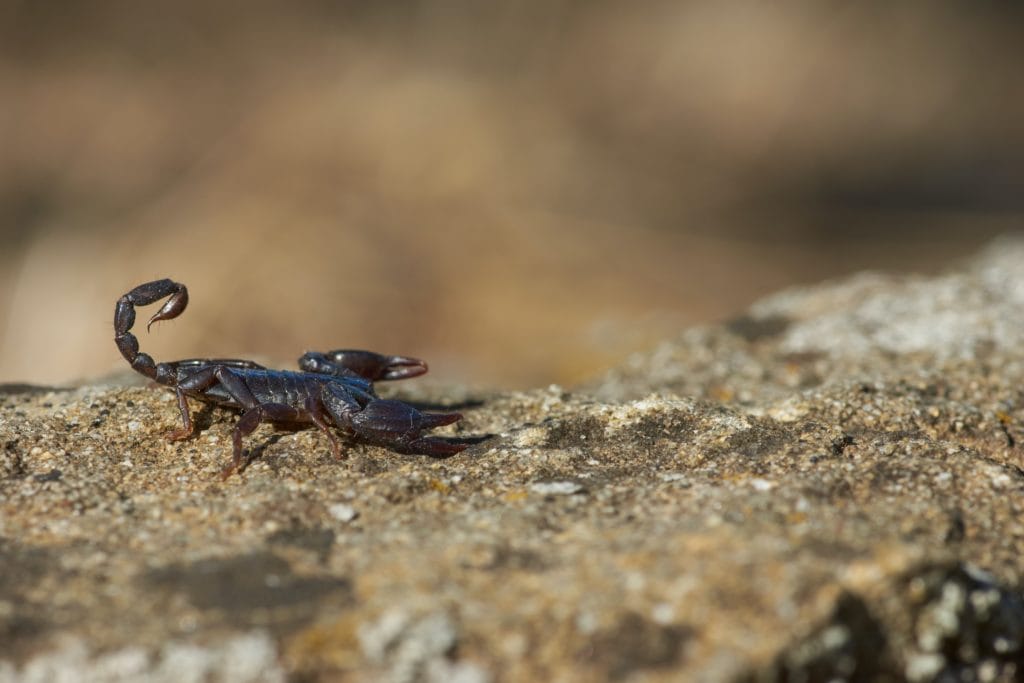
Commonly thought to be desert dwellers, scorpions are in the Arachnida animal class and dwell in habitats ranging from deserts to grasslands and tropical rainforests, in regions such as the Himalayas, North Carolina, British Columbia, and Brazilian forests.
Scientists believe that scorpions have been around for hundreds of millions of years and can study them using ultraviolet light because they fluoresce under these conditions.
The classification of Arachnida makes the scorpion a close relative to the spider. However, scorpions are characterized by a segmented, elongated tail at the rear with a curved tip loaded with venom. The front of the scorpion dons a pair of grasping pinchers.
All scorpions have two tiny eyes and poor vision, four pairs of legs, and hunt their prey by sensing vibrations through sound and touch. As adults, most scorpions are solitary and nocturnal, meaning they are mainly active during the night. Scorpions mainly prey on spiders, insects, and other small invertebrates.
Scorpions have become a symbol of evil and treachery. Its image dons shields and flags of soldiers that helped during the crucifixion of Christ.
There are approximately 2,000 known species of scorpions. However, just over twenty percent of those have the potency in their venom to be fatal to humans.
11 Most Venomous Scorpions
1. Spitting Thick Tail Black Scorpion
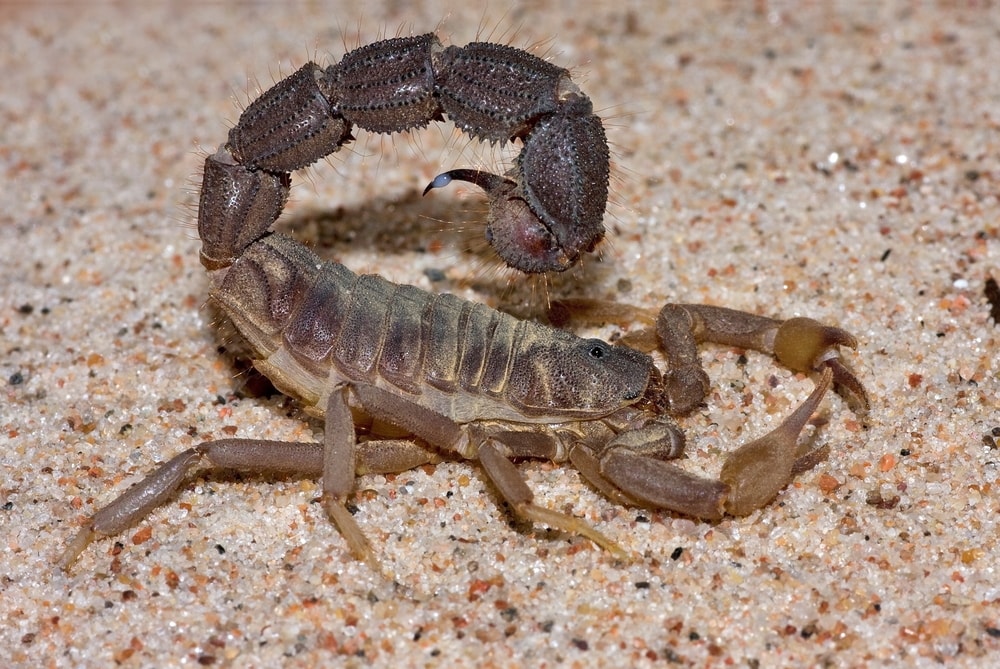
This scorpion species can grow to 6 inches (15cm) long and is a large species of the South African Scorpion. Scrublands and desert areas in Africa are the typical habitats for this species.
They have powerful, thick tails, a potent sting, and two tiny pinchers. This scorpion species produces two categories of venom; firstly, to supply a warning sting or immobilize small prey; secondly, more toxic venom for more prominent creatures.
As its name suggests, the Spitting Thick Tail Black Scorpion can spit its venom as much as 1 meter (3ft), resulting in temporary blindness in the eyes of the intended victim. The venom from this species has an equal potency to cyanide.
2. Yellow Fat Tail Scorpion
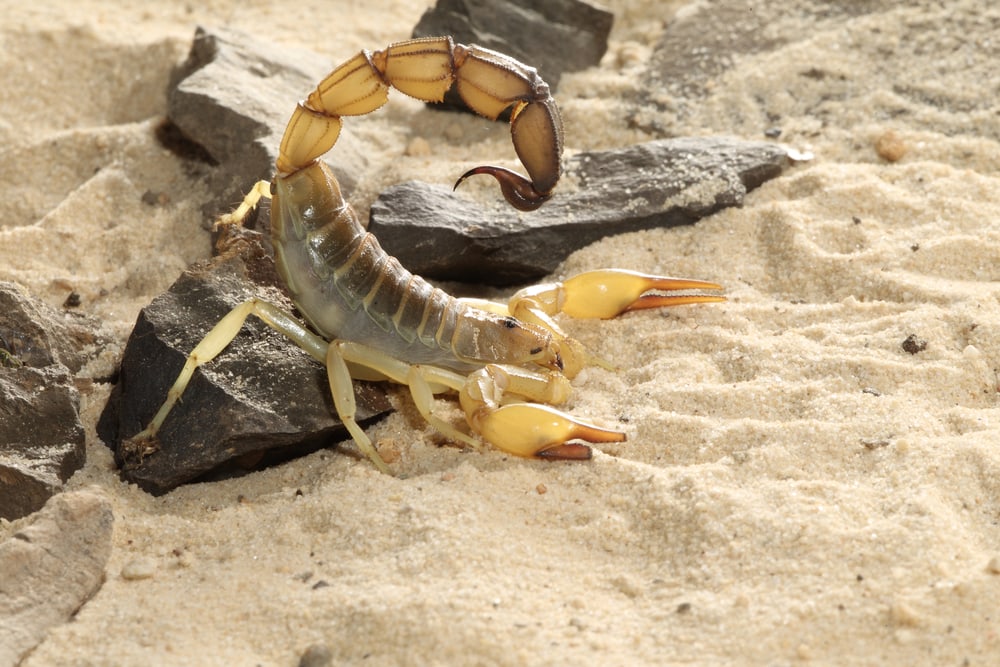
The Yellow Fat Tail species is a hardy desert scorpion found in Africa and the arid regions of the Middle East. Known by its scientific name Androctonus australis, which comes from the Greek word ‘Andras’ meaning ‘man’ and ‘kteinein’ meaning to ‘kill, the Yellow Fat Tail grows to a length of 10cm (3 in).
It can hold on to prey using its large pinchers, then administer the sting by arching its tail over its head. Each year this species is responsible for the deaths of several people.
3. Arizona Bark Scorpion
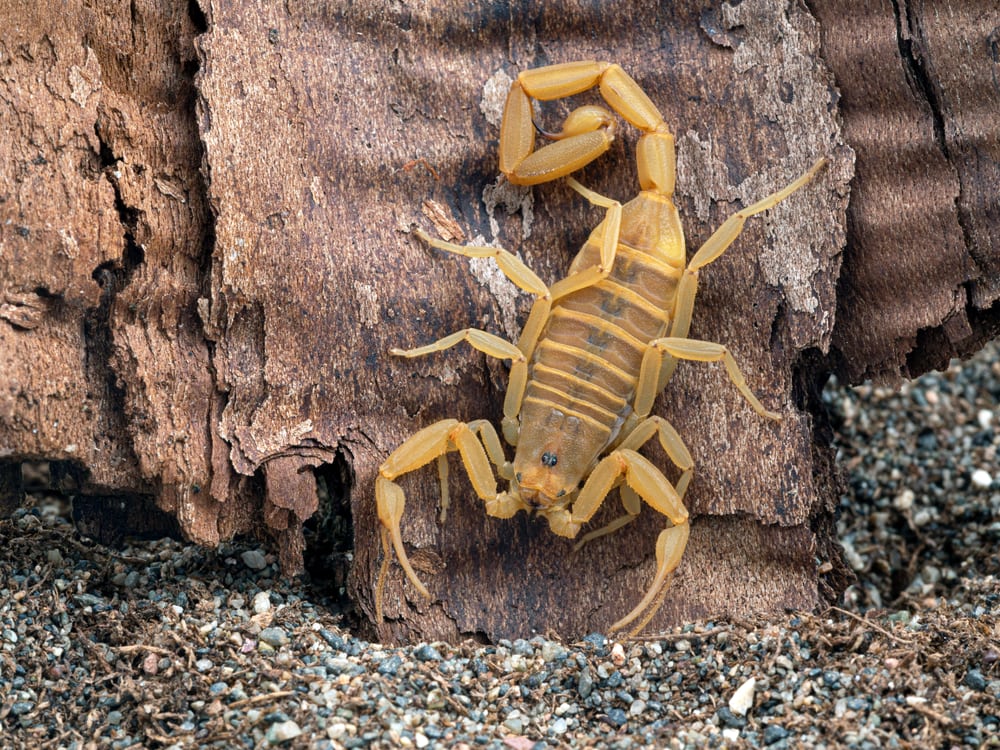
Found in the United States, this is one of the deadliest scorpions on the planet. Typically found in the Sonoran Desert of the United States and Mexico. As an adult, the male species can grow to lengths of 8cm (3 in), and the female a bit smaller. The sting from the Bark Scorpion is painful, causing a numbing or burning sensation around the affected area. The venom’s potency is so high that it can kill humans.
4. Shield-Tailed Scorpion
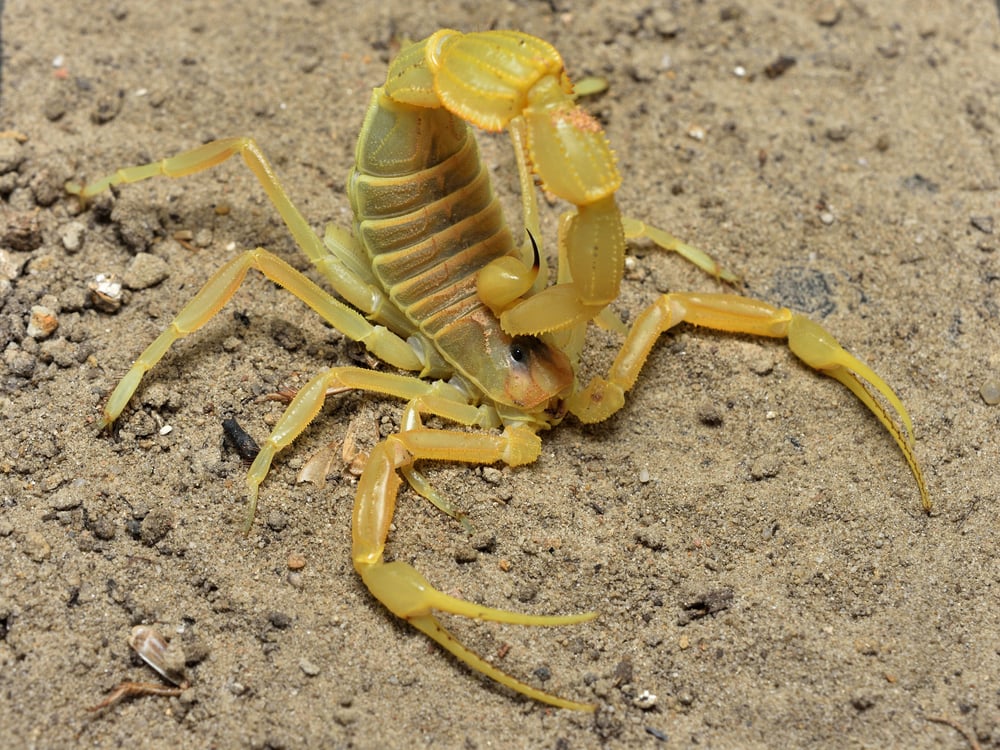
This scorpion originates in the Arabian Peninsula and grows to a whopping 9 inches (22cm). It is considered one of the largest known species of scorpion. Typically this scorpion is sandy-yellow, with a tail that curves over its back. Its sting is venomous to humans, but it prefers lizards, spiders, and scorpions.
5. Arabian Fat-Tailed Scorpion
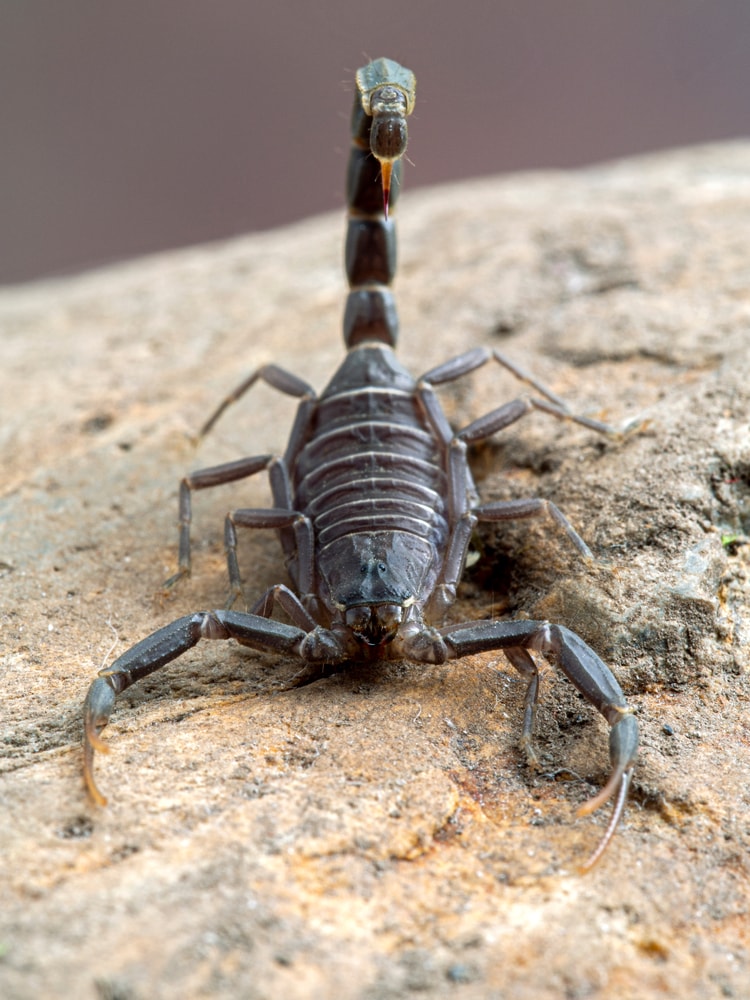
The Arabian Fat-Tailed Scorpion is renowned for its venom and sting. The Middle East and North Africa are where you can find this menace. It is a cousin of the Yellow Fat Tail and is known for being aggressive and having fatal venom, which contains one of the most potent neurotoxins. The Arabian Fat-Tail’s sting attacks the central nervous system and results in respiratory collapse and paralysis.
6. Brazilian Yellow Scorpion
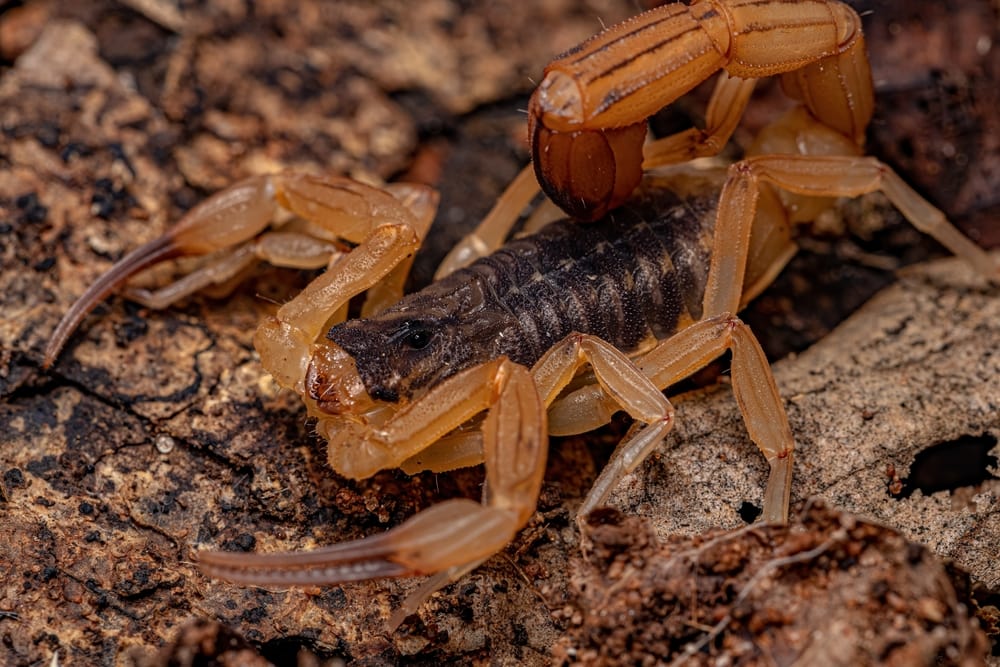
South America’s deadliest scorpion species. The venom from this species is highly toxic. According to the Brazilian Ministry of Health, between 2018 and 2019, the number of individuals stung by scorpions increased to over 140,000.
An irregular and notable characteristic of the Brazilian Yellow Scorpion is parthenogenesis meaning the female reproduces without any male intervention. Female spawn up to 30 nymphs, baby scorpions, twice each year.
7. Yellow-Legged Burrowing Scorpion
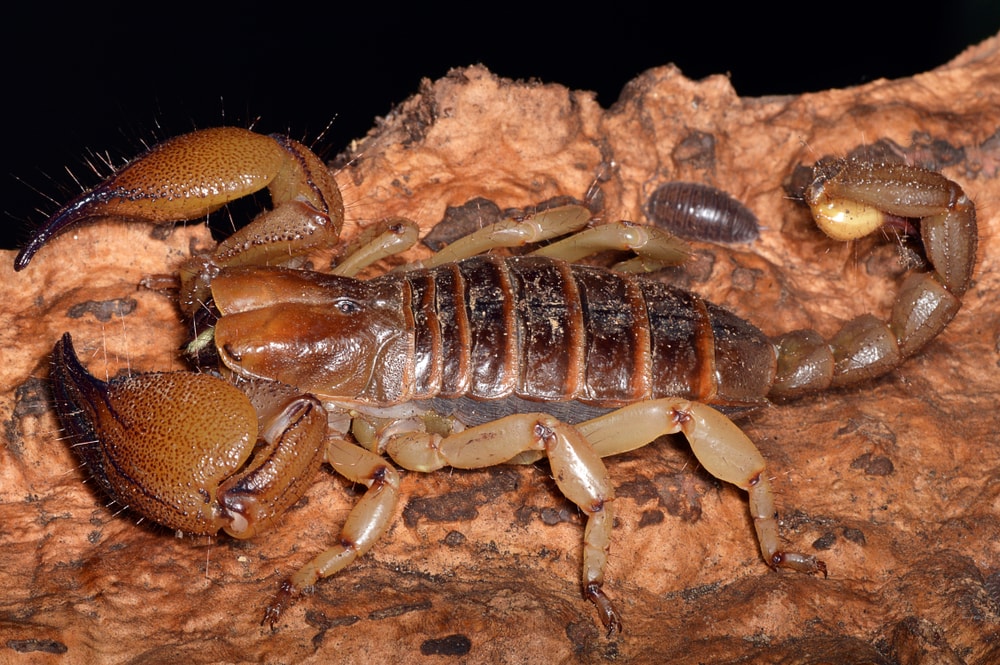
This scorpion species is also known as the Shiny Burrow Scorpion or Hissing Scorpions. The name Hissing Scorpion comes from the sound they make when disturbed. You would mainly find them in regions throughout Southern Africa. They are known for their deep, spiraling burrows in sandy soil. Typically larger than most species of scorpions, the Yellow-Legged Burrowing Scorpion has large pinchers and bulky bodies.
8. Tanzanian Red Clawed Scorpion
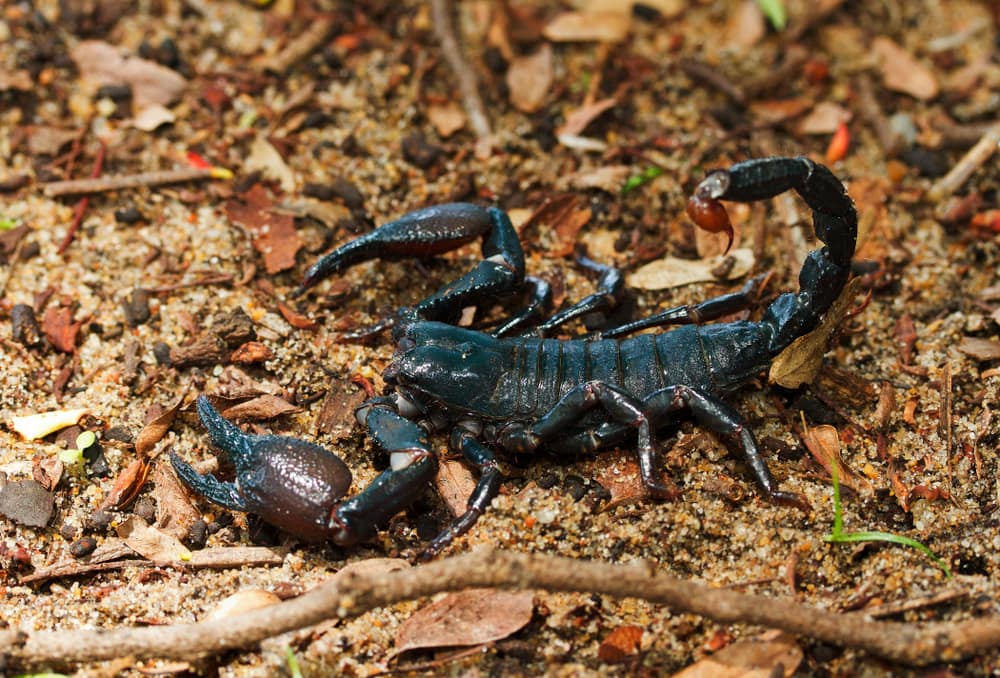
As the name implies, this scorpion species is native to Africa, specifically Tanzania. The body is black, and the pinchers have a red hue. They typically live in humid conditions, such as the floor of the African rainforest, and grow up to 12.5cm (4.9 in) in length. The sting is used mainly as a defensive weapon but, when threatened, becomes aggressive. Frogs, insects, mice, and other rodents are the main delicacies for this species.
9. Deathstalker Scorpion
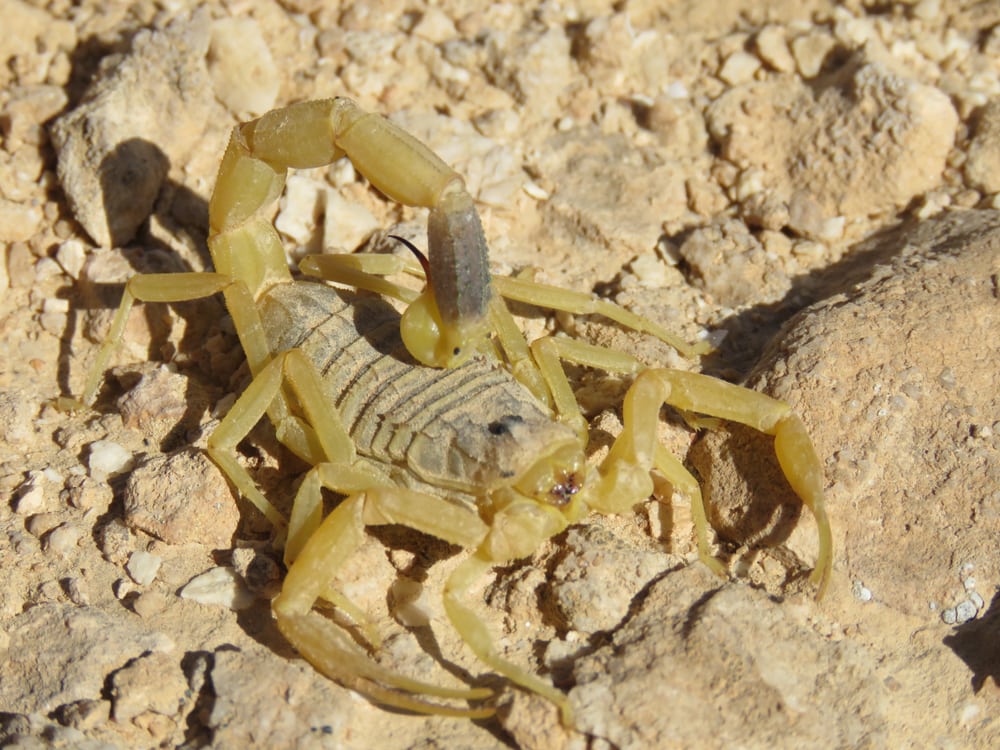
Renowned as one of the deadliest scorpions on the planet, the Deathstalker inhabits the scrublands and deserts of the Middle East and Africa. It has a distinctive yellow color along the legs and tail and a darker body and grows to 3 inches (7.6 cm) in length. The sting from one of these stalkers is excruciating and increases the heart rate and blood pressure. Muscle convulsions and comas are also known complications from the sting from a Deathstalker.
10. Indian Red Scorpion
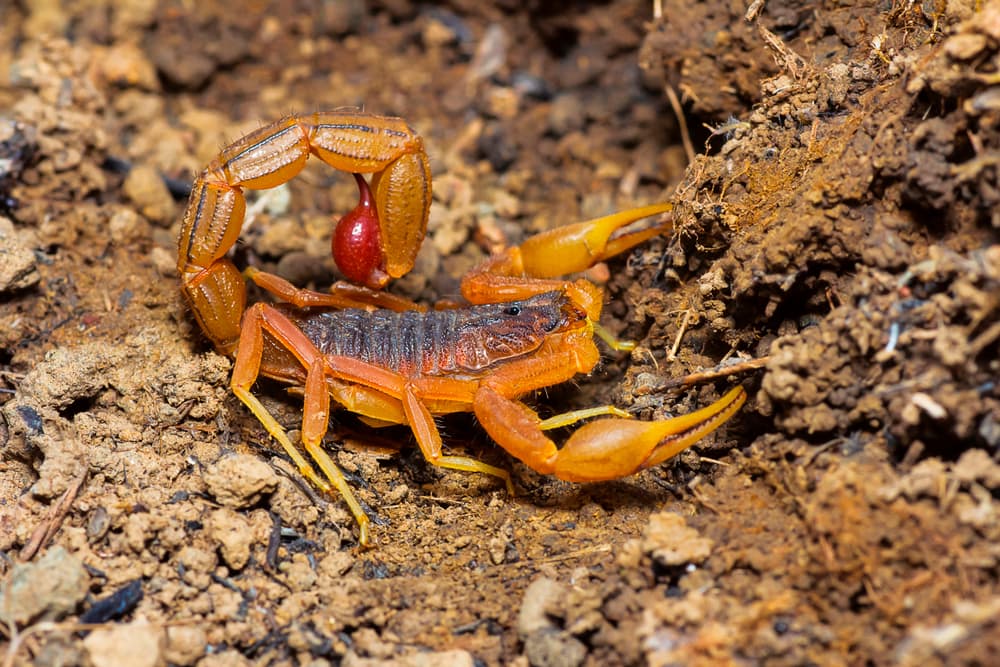
Considered the world’s most lethal scorpion species, the Indian Red Scorpion lives in Sri Lanka, Pakistan, Eastern Nepal, and India.
They are dark orange to reddish and grow to 3.5 inches (8.8cm) The sting from an Indian Red Scorpion is characteristic of excruciating pain, heart problems, vomiting, nausea, and sweating. In more dire situations, it could result in the collapse of the respiratory system and ultimately death.
11. Emperor Scorpion
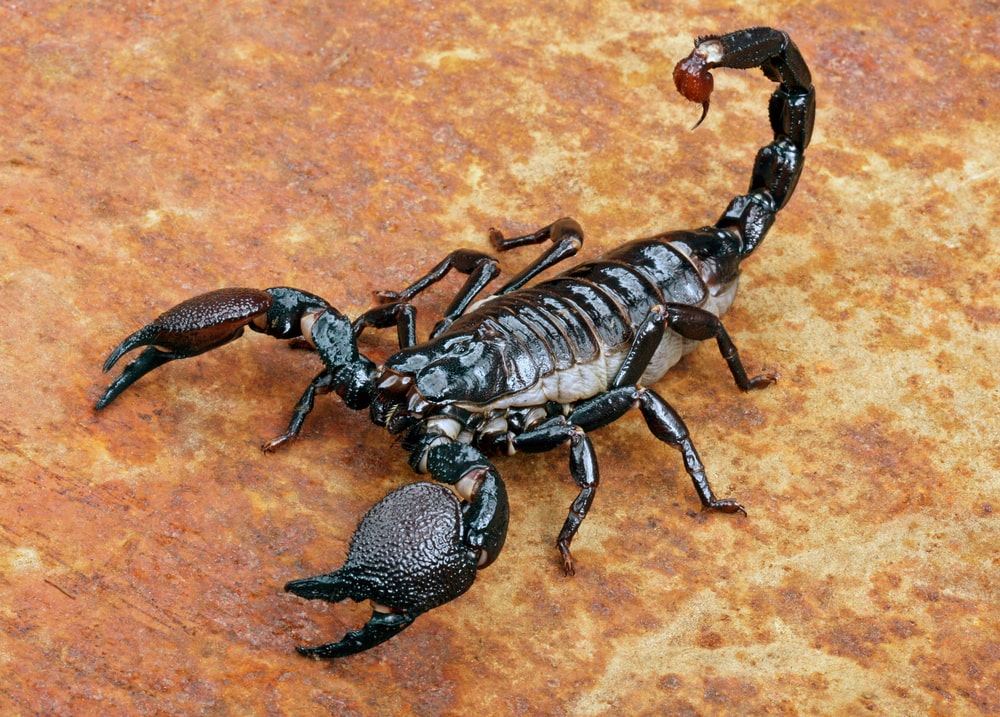
This species is native to the savannas and rainforests of West Africa, Senegal, Sierra Leone, Ghana, and the Ivory Coast. They are mistaken for the Tanzanian Red-Clawed and Malaysian Forest Scorpions due to their black color and reddish pinchers.
They are one of the largest species on the planet as they grow to approximately 8 inches (3 in) in length. The Emperor Scorpion is considered a formidable species due to its size and color. They use their huge pinchers to catch and crush their victims. However, the Emperor Scorpion is a docile species and not very aggressive.
You may also like: Learn the 3 Species of Scorpions Found in Florida: With Images, Facts, Descriptions, and More!
9 Largest Scorpions
Five of the largest species are listed above. The Deathstalker, Tanzanian Red-Clawed, Spitting Thick Tail Black Scorpion, Shield-Tailed Scorpion, and the Emperor Scorpions. Below are the other nine mammoths of the species.
1. Florida Bark Scorpion
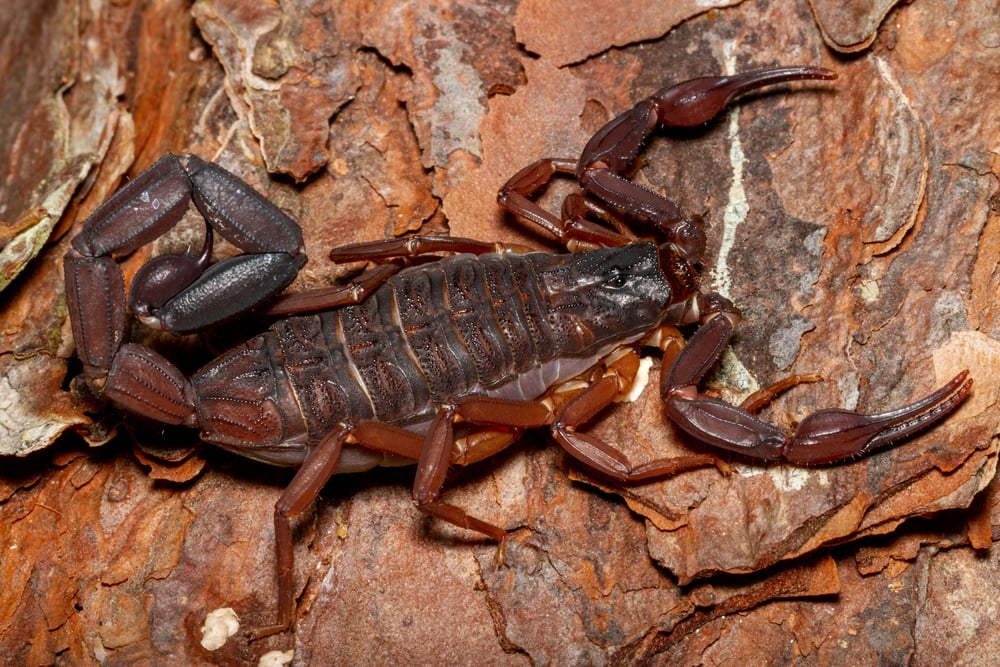
Also referred to as the Slender or Brown Bark Scorpion, this species is slightly larger than the Deathstalker, growing up to 4.7 inches (11.9 cm) in length. Parts of Central and North America, including Ecuador, Mexico, and Florida, are the main habitats of this species. The Florida Bark Scorpion also calls Jamaica, Cameroon, and the Canary Islands home. It also calls Cuba home but is locally known as Alacran Azul or Blue Scorpion in English.
The barks of trees and under rocks are where this species spends the day, as they hunt during the night. The main predator is the tarantula, which can kill them with ease, even after being stung by the Florida Bark Scorpion.
2. Vietnam Forest Scorpion
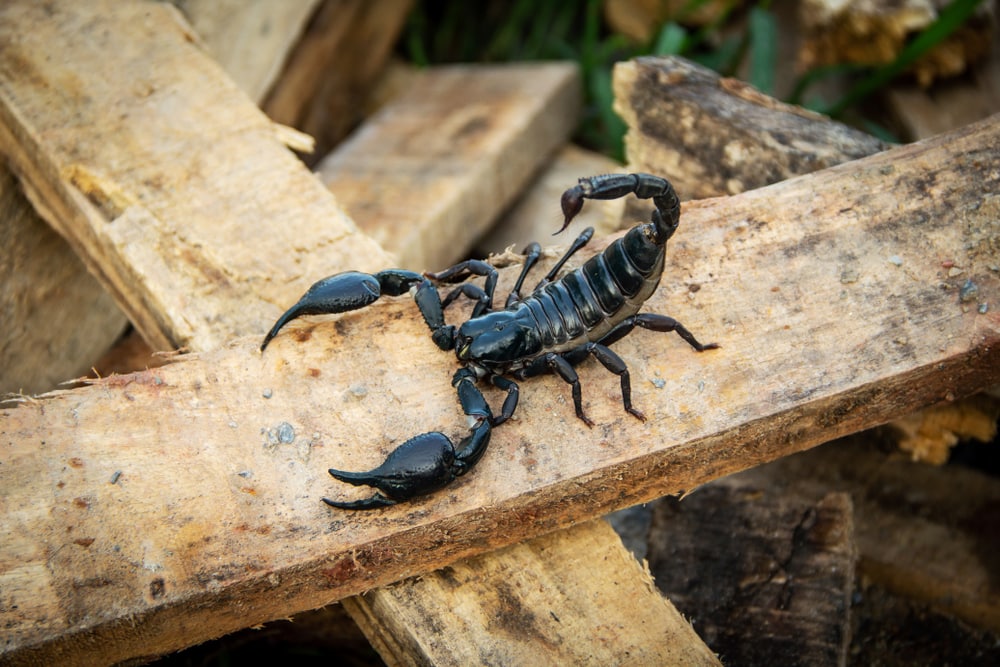
Also recorded as growing to lengths of 4.7 inches (11.9 cm), these scorpions are entirely black. Preferring to live in humid forests in Laos and Vietnam, they dwell on the forest floor, hiding under logs and leaves, ready to ambush prey. Not too picky about what they eat, other scorpions are also on the dinner menu. The Vietnam Forest Scorpion is aggressive, but the venom treats individuals suffering from pneumonia. The indigenous people of Vietnam eat this species, using it as a main ingredient in wine.
3. Transvaal Fat-Tailed Scorpion
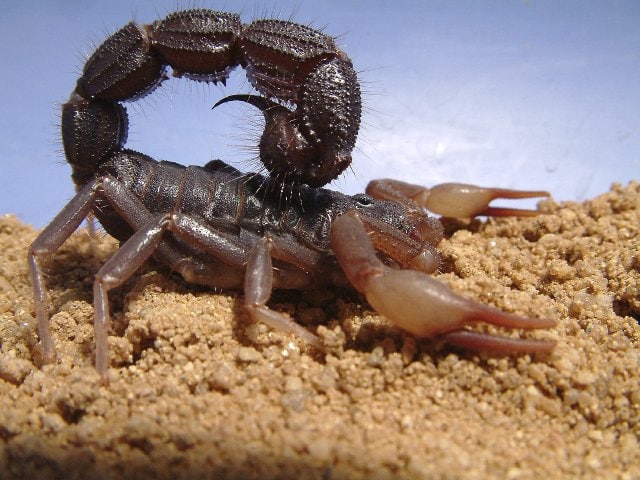
Commonly referred to as the South African Thick Tail Scorpion, the Transvaal Fat-Tailed Scorpion has a recognizable and distinctive appearance because of its thick tail. They grow to approximately 5.5 inches (13.9cm) and have a dark brown color. The desert is their preferred habitat, commonly found in African regions including South Africa, Swaziland, Mozambique, Botswana, and Zimbabwe. A unique characteristic of this scorpion is that it rubs its tail across its back, making a distinctive sound as a warning,
4. Malaysian Forest Scorpion
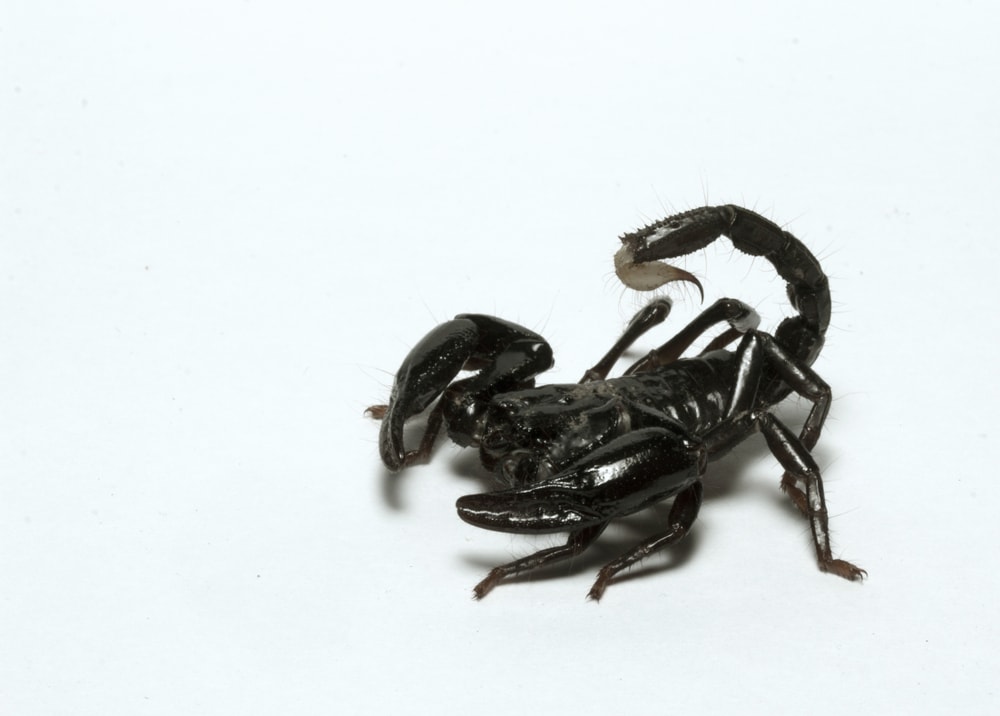
A close relative of the Emperor and Giant Forest species, the Malaysian Forest Scorpion grows up 6.3 inches (16cm) and is entirely black. Known to inhabit tropical forests of Thailand, Vietnam, and Malaysia, they burrow under logs and in the ground. During periods of food scarcity, the Malaysian Forest Scorpion reportedly goes extended times without eating.
5. Giant Hairy Scorpion
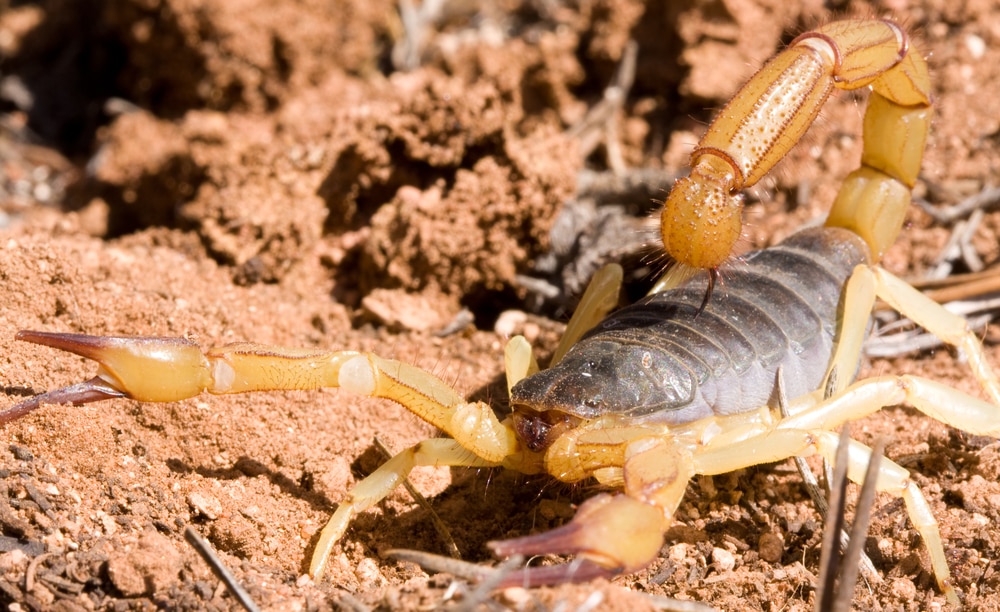
This species also goes by Arizona Hairy Scorpion and the Giant Desert Hairy Scorpion. The largest scorpion species in North America at a length of 6.7 inches (17 cm). The species lives in regions spread across Nevada, Utah, California, and Arizona’s deserts and typically have backs that are green and yellow legs.
Their name originates from the hair that forms on their legs and tail. Lizards, snakes, and even the giant centipede of Arizona are delicacies for this large scorpion species.
6. Javanese Jungle Scorpion
This species is native to Indonesia and resides in the rainforests of that country. They are dark brown or black with a green hue and grow to an average length of 4 to 7 inches (10-17cm). Javanese Jungle Scorpions require temperatures around 75 to 90 degrees Fahrenheit to survive. They are well built and use their pincers for defense or when threatened.
7. Dictator Scorpion
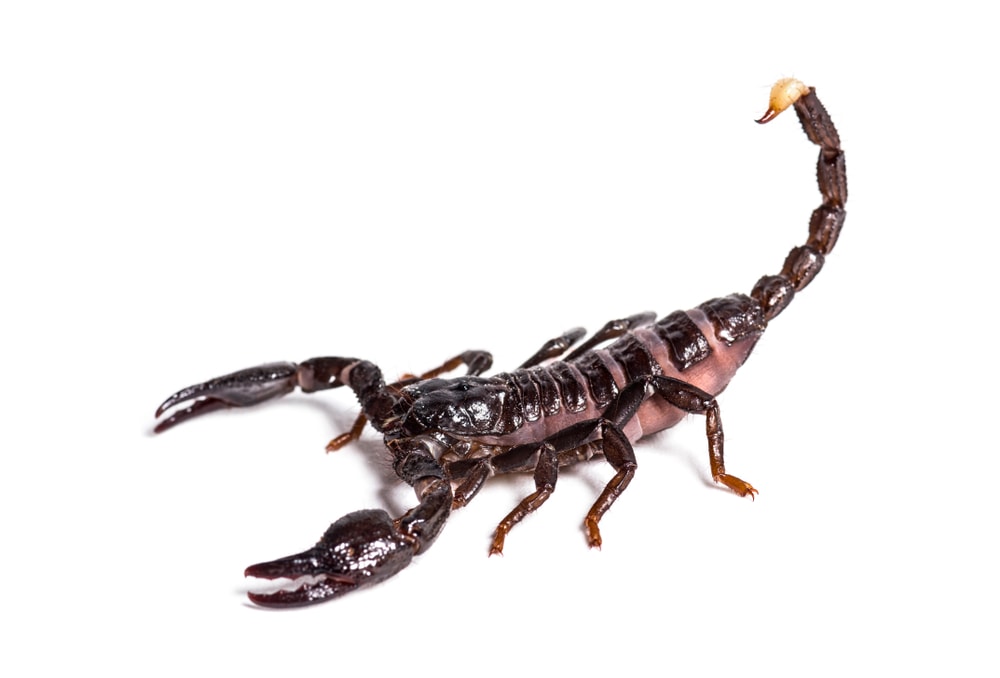
This species is related to the Emperor Scorpion and has a large and robust pair of pinchers. They grow up to an average of 8 inches (20cm) and are black or dark brown. These scorpions live in habitats in Central African states, for example, Equatorial Guinea, Congo, Cameroon, and Gabon. Although a giant scorpion, this is a timid species, spending most of the day in its burrow.
8. Rock Scorpion
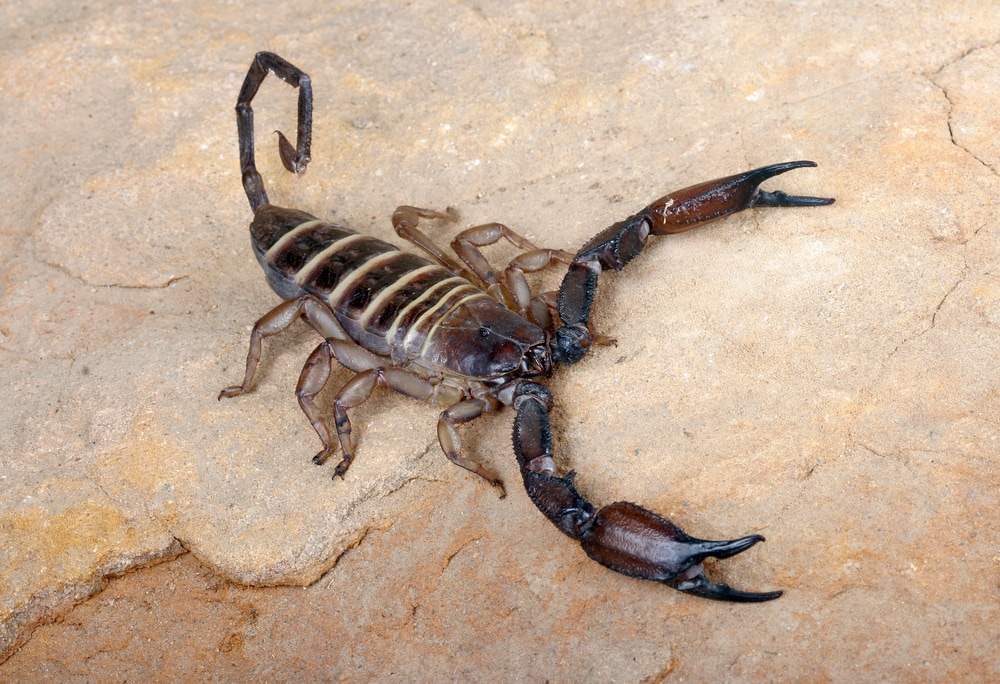
Growing up to 8.25 inches (21 cm) in length, the Rock Scorpion takes the second spot of the largest scorpion species and is called the Flat Rock Scorpion at times because of the way it fits into tiny spaces in the rocks in South Africa. Dark brown with light-colored ridges along their backs, the Rock Scorpion has a thin tail, giving it a distinctive, recognizable appearance. Even though this species is large, the sting is weak and resembles a bee sting.
9. Giant Forest Scorpion
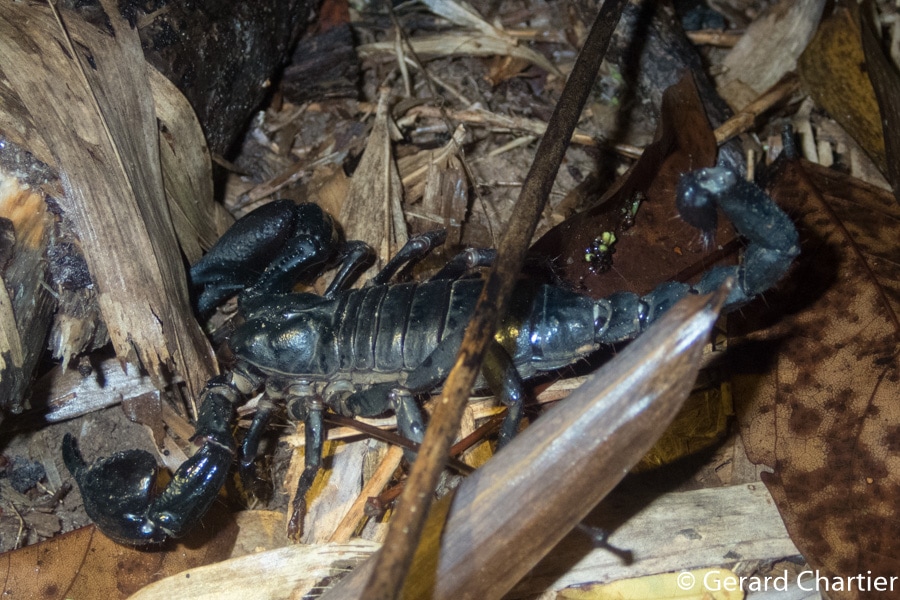
The largest scorpion species on the planet is the Giant Forest Scorpion, measuring a mammoth 9.1 inches (23cm) and weighing approximately 2 ounces (56g).
Mainly inhabiting the rainforest regions in Sri Lanka and India, the Giant Forest Scorpion’s typical diet consists of reptiles, lizards, insects, and other scorpions. Even though they are large, the stinger is weak and used only as a last resort when threatened. They use their large pincers to catch and rip prey apart. They live solitary lives.
You may also like: Know More About the 21 Different Spider Species and Where You Can Spot Them: With Images, Facts, and More!
15 Other Scorpions From Around The Globe
This section will feature scorpions from North America, Asia, Australia, Africa, and South America.
1. Asian Forest Scorpion
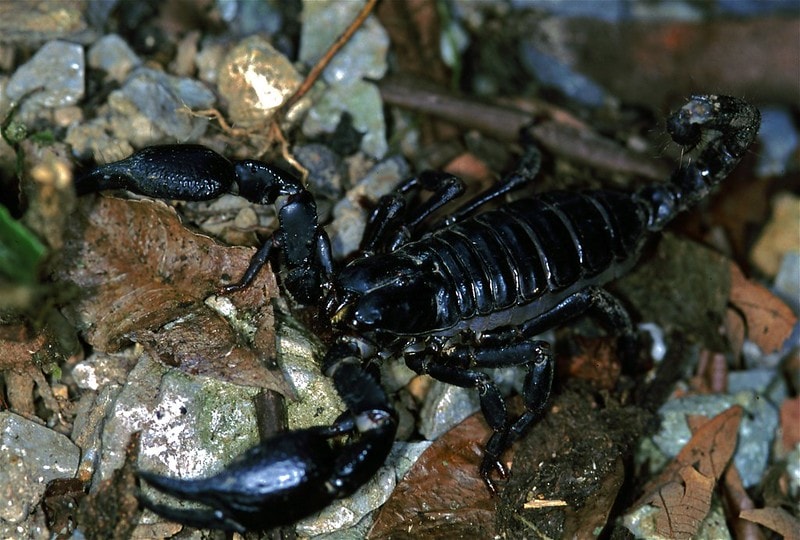
Commonly called the Black Scorpion resides in the tropical regions of Asia. Often confused with the Malaysia Forest Scorpion but is a separate and distinct species. Asian Forest Scorpions grow up 5 inches long (12.7cm). Under direct sunlight are jet black without any other hues, except for the tip of the stinger, which is reddish-brown. They are considered aggressive and territorial. The venom from this species is not lethal.
2. Large-Clawed Scorpion
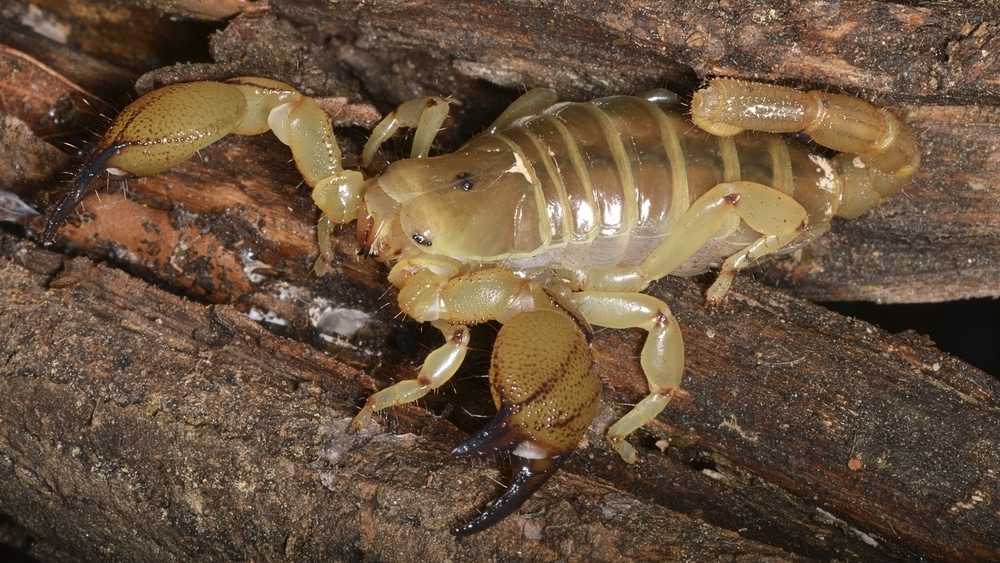
The Large-Clawed Scorpion typically grows up to 3 inches (7.6 cm) and is brown with reddish to golden-brown pincers or claws. They are also known as the Israeli Gold Scorpion. They originate from the Middle East and North Africa, and the natural habitats of this species are dry forests and deserts.
3. Spider Hunting Scorpion
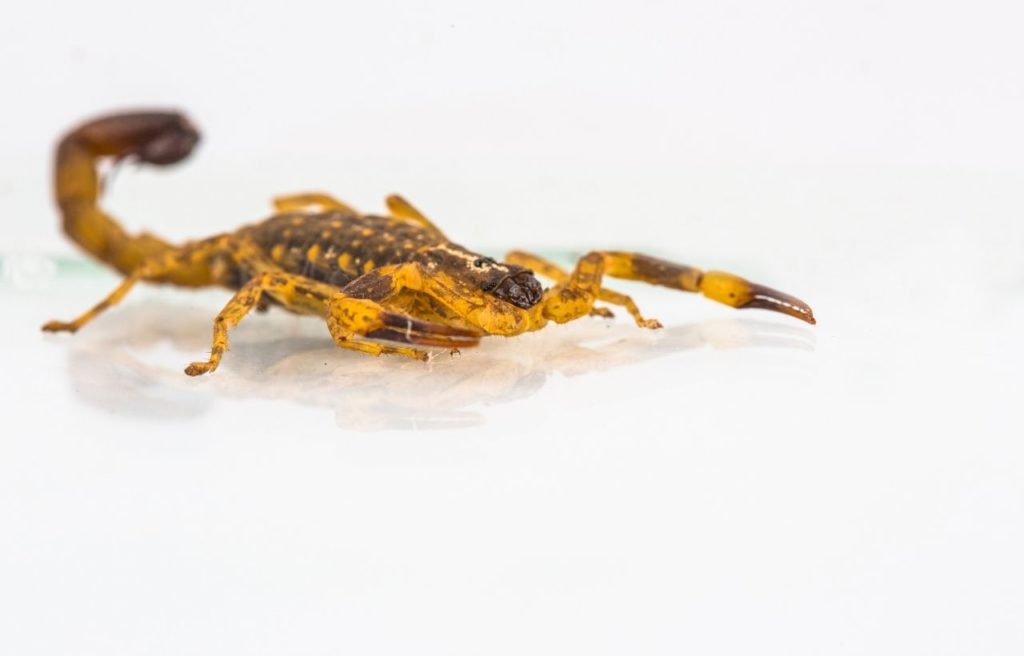
This species has no fear of spiders. It is a medium-sized scorpion that grows up to 5cm long and is a predator of trapdoor and wolf spiders. They are nocturnal hunters found in semi-arid regions across southern Australia. The entire body from pinchers to the stinger of the Spider Hunting Scorpion is golden-brown, with dark brown patches.
4. Flinders Ranges Scorpion
This species is exclusive to the arid Flinders Ranges region in Australia. They are one of the largest scorpion species in Australia, measuring 4.7 inches (11.9cm) approximately. The Flinders Ranges Scorpion has a brown uniformity of color across its body. The metabolism is slow, and they typically only eat once a month.
5. Marbled Scorpion
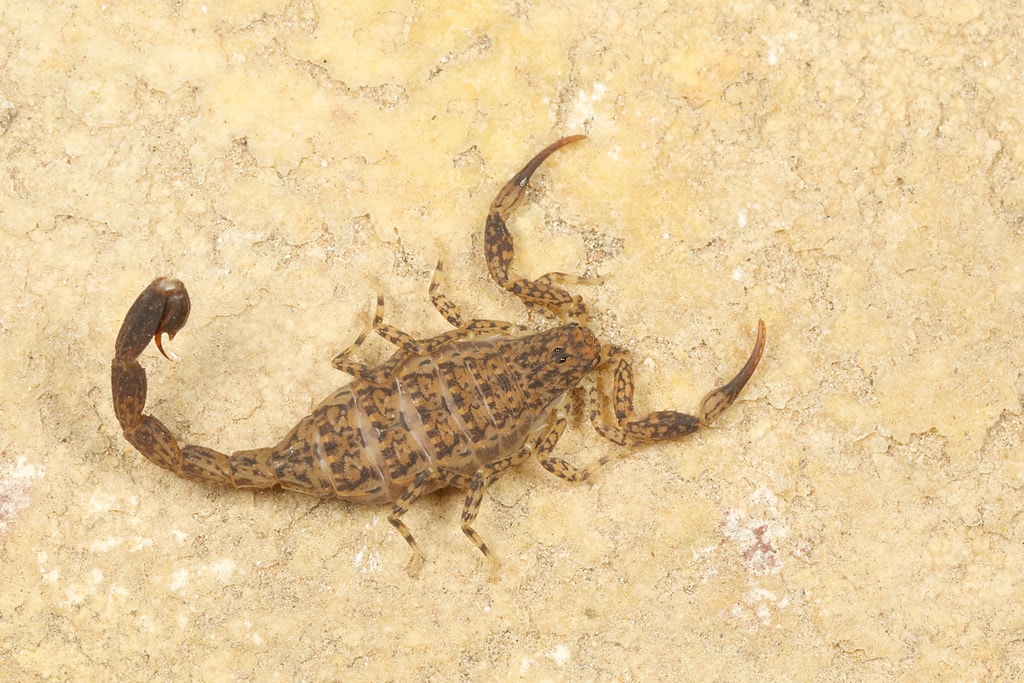
This scorpion species resides in urban areas, thus making it the most frequently encountered scorpion species in Australia. It is a tiny, slender scorpion with varying colors, ranging from gray or slate to a dark cream color, with a dark brown marble pattern over a light brown canvas on its tail, legs, and body.
6. Dwarf Forest Scorpion
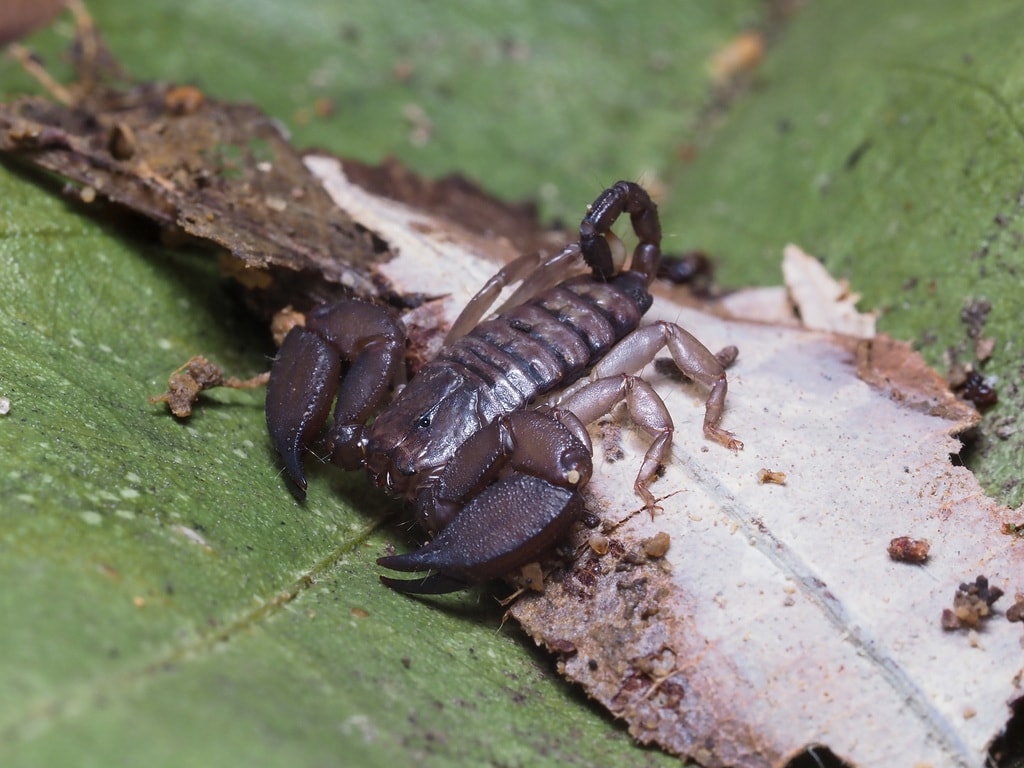
There are roughly six species of forest, sometimes known as wood, scorpions that live in Australia and Tasmania. It is the only scorpion species that habitats Tasmania.</
The Forest Scorpion is yellow to orange-brown with light brown or darker brown patterns. They favor occupying areas that have high levels of moisture. The sting received from a Dwarf Forest Scorpion results in pain for hours and some inflammation.
7. Salt Lake Scorpion
This species is a fascinating scorpion. It has adjusted to South Australia’s barren, harsh salt lakes and grows to about 45mm (1.5 inches). Typically they take advantage of the warm summer nights when actively hunting for food, such as resting flies and tiny spiders.
8. Sand Scorpion
Sand Scorpions typically inhabit regions with temperatures 70 degrees Fahrenheit and above. However, they avoid any area that exceeds 100 degrees Fahrenheit. They prefer the drier states in America and deserts across the globe.
The Sand Scorpion, as the name implies, is just as content above the sand as it is beneath it. This species is larger than most scorpions and has a long, tanned shell. The tail is long enough to curve over its head, ready to attack its prey which it hunts at night. They use the sand to send and receive vibrations of information regarding their surroundings.
9. Buchar’s Scorpion
These are small scorpions that might be more than one species. They live in dunes scattered across West and South Australia. Due to the light hue of the scorpion, they have natural camouflage as they wait to ambush their prey.
10. Northern Scorpion
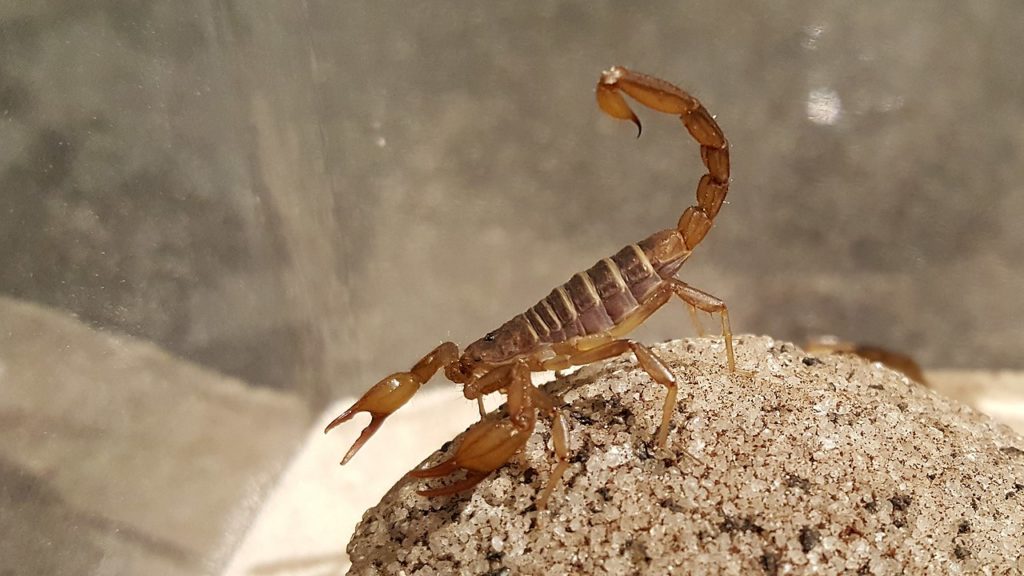
The Northern Scorpion is the only species located in Montana. The optimum place in the United States to find these scorpions is Southeast Montana, close to sandstone cliff areas. It is uncommon for the scorpion to attack and sting anyone. However, after being stung, the venom delivers a paralyzing venom.
11. Striped Bark Scorpion
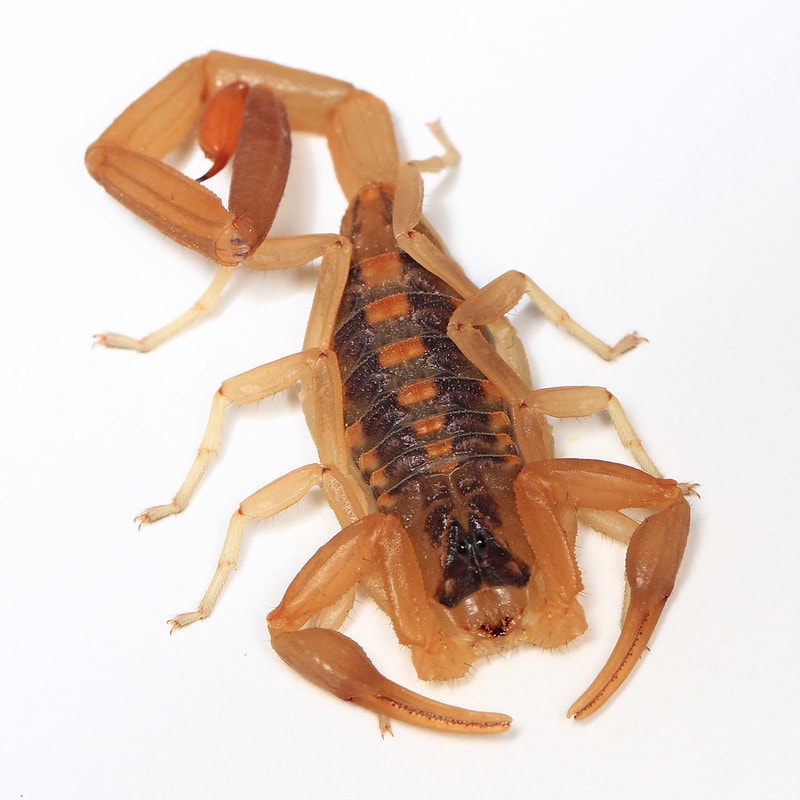
The Striped Bark Scorpion is typically yellowish to tan, with two black, broad stripes located along their backs. They usually are smaller than the Arizona Bark Scorpion, even though they grow to roughly 2 inches. They have a characteristic long and slender shape. This species normally lives in debris, under boards or rocks, in varied habitats, such as grasslands, rocky slopes, and juniper breaks. They are active foragers, as they do not burrow.
12. Southern Unstriped Scorpion
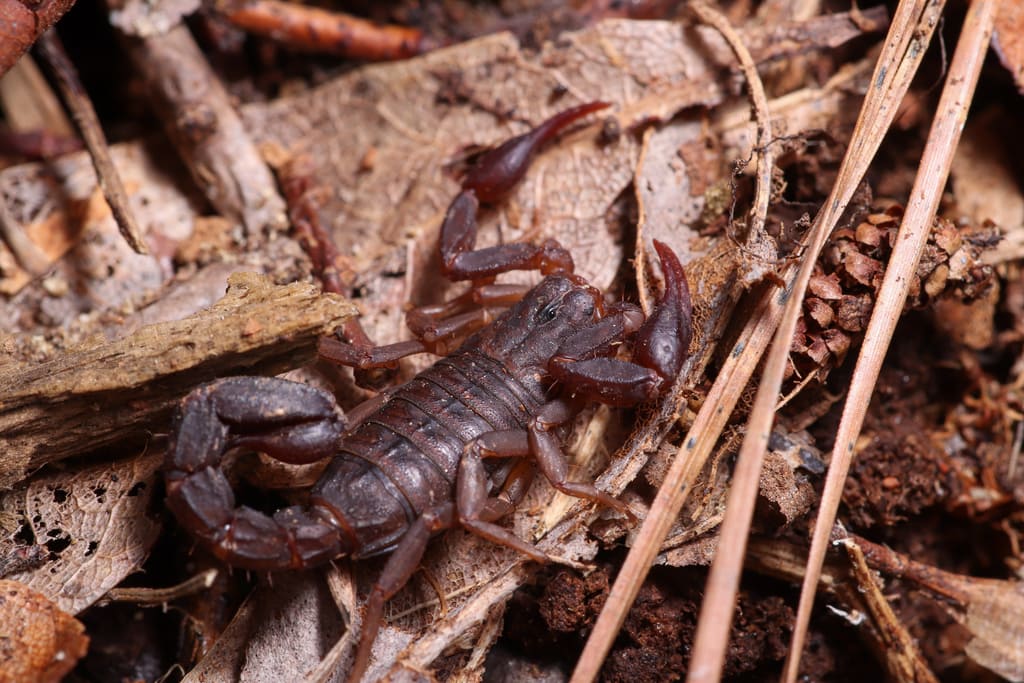
If you live within the southern states of America, frequent encounters with Southern Unstriped Scorpions is the norm as they inhabit Tennessee, Louisiana, Mississippi, Alabama, Georgia, North & South Carolina, West Virginia, and Kentucky. They grow to an average of 1.5 inches and are uniformly brown, and they are nocturnal hunters that feed on large-bodied insects and spiders. Another known name for this species is the Southern Devil Scorpion.
13. Yellow Ground Scorpion
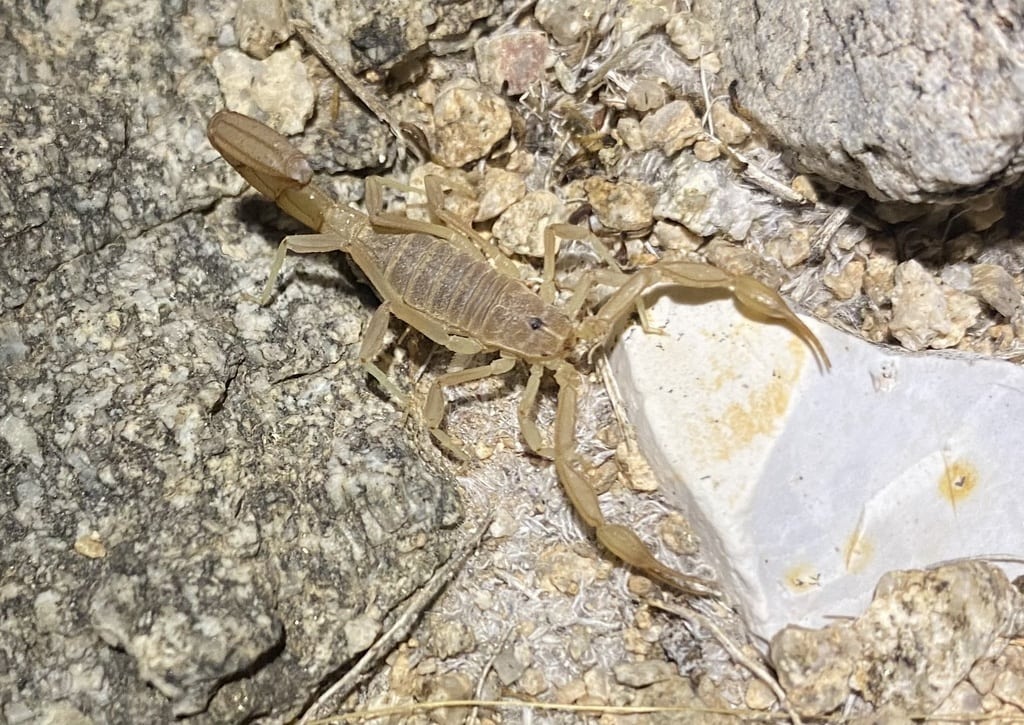
This species closely resembles the Arizona Bark Scorpion and is commonly mistaken for it. It has a granular body texture and is yellow with thin appendages. It is a nocturnal hunter and mainly inhabits the southeast of Arizona.
14. Lesser Stripetail Scorpion
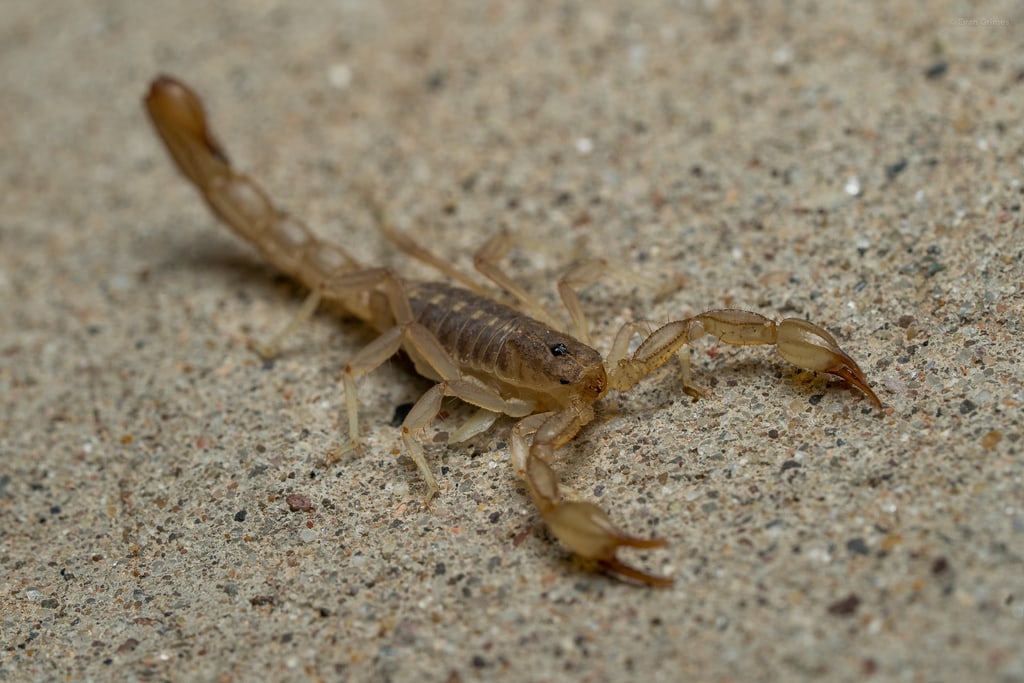
This species is one of the smaller scorpions and might be brown or yellow with four dark brown stripes beneath their tail. They grow up to approximately 1 inch in length (2.5cm) and inhabit the southwestern United States, in regions like Texas, New Mexico, and Arizona. The Lesser Stripetail Scorpion lives in rolling grasslands to deserts to rocky mountains. The sting is painful and can last for as long as thirty minutes.
15. Lesser Brown Scorpion
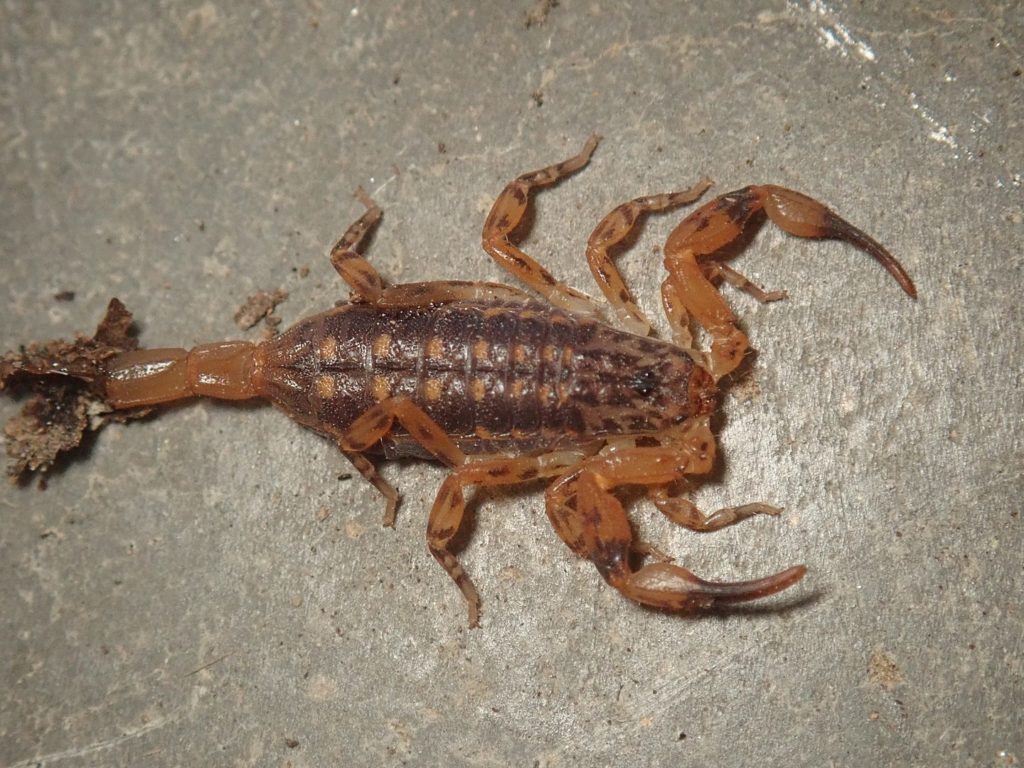
Lesser Brown Scorpions inhabit tropical regions like Hawaii, Maui, and Oahu. But are native to Asia, without a neurotoxin, the sting resembles a bee and is mainly used to immobilize prey or for defense. It is nocturnal and hunts millipedes, spiders, insects, and small rodents. They grow to 3.5 inches and are black or brown.
You may also like: Learn the 27+ Species of Spiders to See in Arkansas: With Images, Facts, Descriptions, and More!
Scorpions That Aren’t Scorpions
Even though the name might say scorpion, in reality, the arachnids listed below might not be actual scorpions.
Giant Whip Scorpion
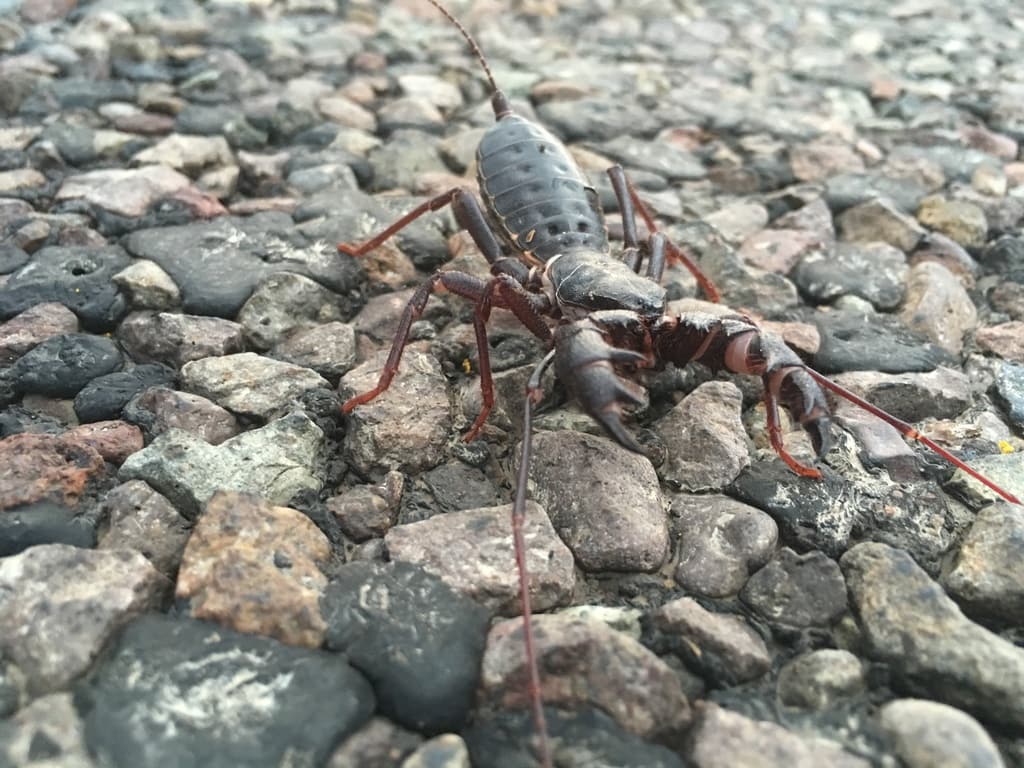
The mere name of this species sounds terrifying, not to mention that they grow up to 2 inches in length (5cm). They are also known as Grampus and Vinegarron. They are nocturnal and feed on pests like termites and cockroaches by capturing them with their pedipalps.
The Giant Whip Scorpion is dark brown and has four pairs of eyes. One pair of eyes sits at the front of the head, while the other three pairs sit at the side of their head. Even with all these eyes, the Giant Whip Scorpion still has poor sight and uses one of the four pairs of legs to sense their surroundings as they move. The tail resembles a whip, and they spray an acidic compound that smells similar to vinegar.
Tailless Whip Scorpion
Tailless Whip Scorpions are not actual scorpions but a hybrid between a spider and a scorpion, closely resembling the Whip scorpion but without the whip-like tail. Commonly referred to as Cave Spiders and Whip Spiders. The species inhabits parts of Africa, Asia, North, and South America, in tropical and subtropical regions. Including the legs, this species grows to just under 2 inches.
The Tailless Whip Scorpion varies from dark brown to blackish-brown with broad, flat bodies and long slender legs. They do not possess venom and are harmless to humans.
Pseudoscorpion
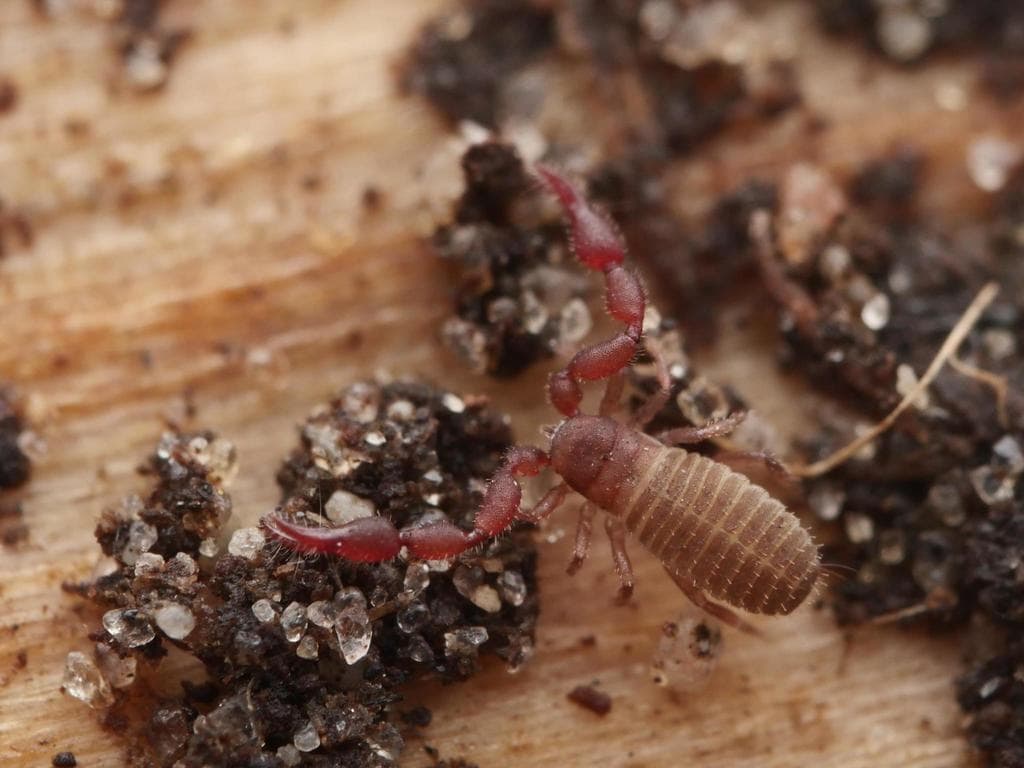
Pseudoscorpions are considered false scorpions and are known as book scorpions. They don’t possess a venom-filled stinger. Instead, they have venom in their pincers used to kill prey. They grow to not more than 1/8 inch and vary in color but are typically reddish-brown. They have a teardrop or oval shape with flattened bodies. Pseudoscorpions closely resemble spiders as well, due to them producing silk, which they use to create cocoons to shelter with during colder weather.
Wind Scorpion
The name originates from the speed at which this species moves when disturbed. They are also called Sun Spiders, Camel Spiders, and Solifugids, but they are not true spiders or scorpions. The Wind Scorpion grows up to 4 inches in length and is reddish-brown, tan, or light gray. They cannot sting but will bite if threatened or disturbs. The bite is not lethal but will result in some discomfort and pain.








